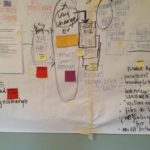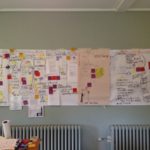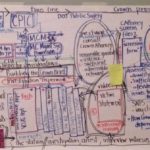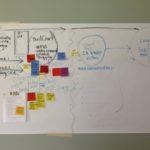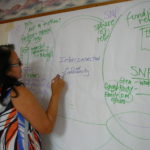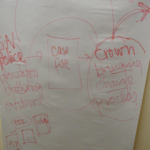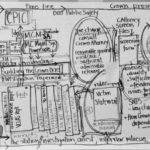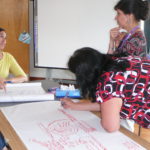I have had the honour and privilege of working with Ganohkwasra Family Assault Support Services on two projects that begin with and work for, the Six Nations of the Grand River Territory community and Haudenosaunee people. We adapted Institutional Ethnography concepts, methods, and techniques; prioritized Ganohkwasra’s goals of building knowledge and reciprocal relations among agencies and strengthening relationships within the community and outside it. We worked with Haudenosaunee principles; fit our work to the concrete realities of the community; and worked in politically charged settings on the highly sensitive topics of police sexual assault investigations and services for Six Nations victims of sexual violence.
Both projects were under the then-Liberal government of Ontario’s Sexual Violence Action Plan Programs for Indigenous communities. The first was a province-wide 2012-2015 Community Response Initiative funded by the Ontario Women’s Directorate. Ganohkwasra was one of four Indigenous organizations invited to undertake research in their community. (See Past Work with Indigenous Organizations). The second project (Bomberry, Turner & Werner, 2016, Turner & Bomberry, 2021) was funded by the Ontario Ministry of Community Safety and Correctional Services’ 2016 Police Responses to Sexual Violence and Harassment Against Aboriginal Women and Girls Program. Ganohkwasra’s Executive Director Sandra Montour asked Susan to apply for funding with Ganohkwasra as partner in affiliation with Six Nations Police. They wanted to go deeper with the Police into sexual assault investigations and services, from Six Nations’ standpoint, work with IE and Haudenosaunee principles, and produce the (Ministry’s program-required) best-practices for police investigations that were culture-based. Our proposal was explicitly IE with the goal to achieve real outcomes for the community. Susan worked with Ministry officials to clarify and establish these terms of the project. In our conversations, being ‘community-minded’ as Six Nations agencies and police are, was central. Co-researcher Amye Werner in consultation with Julia Bomberry drafted the ‘Community-Minded Best Practices’ Protocol for on and off reserve agencies to sign on to. Ganohkwasra continues to create new initiatives and make change in the community and beyond.
They created various trainings for non-Indigenous and Indigenous professionals from a trauma-informed and Haudenosaunee perspective, including in conjunction with the North American Centre for THREAT ASSESSMENT AND TRAUMA RESPONSE. (VTRA Training from an Indigenous Perspective). See their HOW TO BE AN INDIGENOUS ALLY
